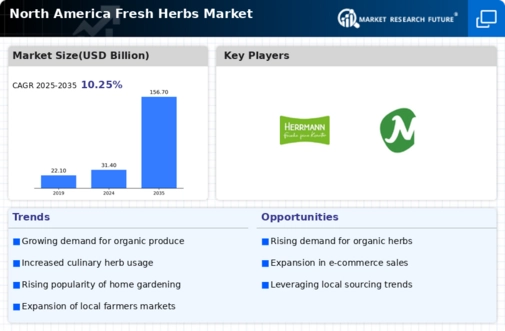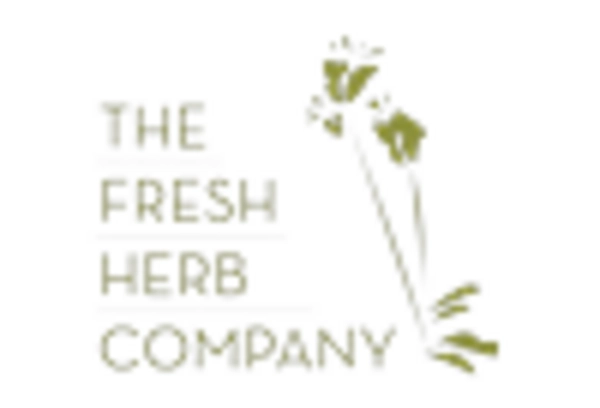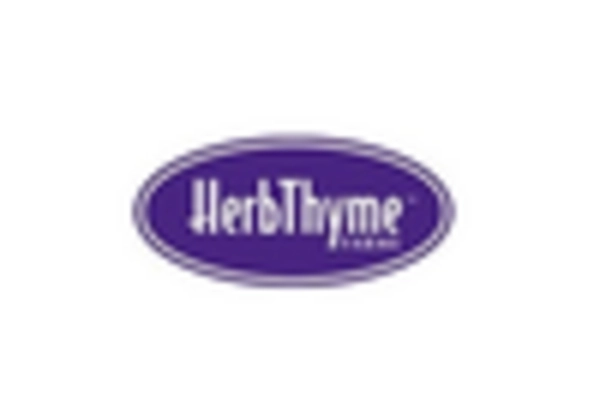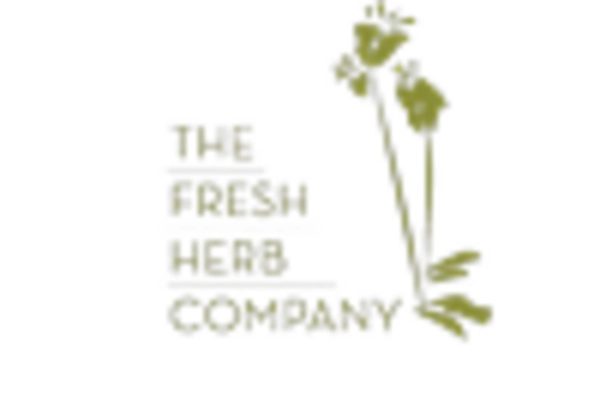Market Trends
Key Emerging Trends in the North America Fresh Herbs Market
In North America, the fresh herbs market has been experiencing notable growth, driven by various trends and factors that reflect changing consumer preferences and culinary habits. Fresh herbs, prized for their aromatic flavors, culinary versatility, and perceived health benefits, have become essential ingredients in a wide range of cuisines, from traditional to innovative. One prominent trend in the North American fresh herbs market is the increasing demand for organic and locally sourced herbs. Consumers are becoming more conscious of the environmental and health impacts of their food choices, leading to a preference for organic herbs grown without synthetic pesticides or herbicides. Additionally, there is a growing interest in supporting local farmers and reducing the carbon footprint associated with food transportation, driving demand for herbs grown and sourced regionally.
Moreover, the market has witnessed a surge in popularity of ethnic cuisines and global flavors, which has led to greater consumption of a diverse range of fresh herbs. Culinary traditions from around the world, including Mediterranean, Asian, Middle Eastern, and Latin American cuisines, often incorporate a rich variety of herbs to enhance flavor and aroma. As consumers become more adventurous in their cooking and dining experiences, there is a growing demand for fresh herbs like cilantro, basil, mint, parsley, and dill, which are staples in many international dishes. This trend is further fueled by the influence of social media, food blogs, and cooking shows, which inspire consumers to experiment with new ingredients and flavors in their own kitchens.
Additionally, the North American fresh herbs market has seen a rise in consumer interest in health and wellness, driving demand for herbs with perceived health benefits and medicinal properties. Herbs like rosemary, thyme, oregano, and sage are valued not only for their culinary attributes but also for their potential antioxidant, anti-inflammatory, and immune-boosting properties. As consumers seek to incorporate more nutrient-dense foods into their diets, fresh herbs are increasingly recognized for their role in enhancing the nutritional profile and flavor of meals, contributing to overall well-being.
Furthermore, technological advancements and innovation in agriculture have revolutionized the production and distribution of fresh herbs in North America. Indoor vertical farming, hydroponics, and greenhouse cultivation techniques allow for year-round production of herbs in controlled environments, overcoming seasonal limitations and ensuring a consistent supply to meet consumer demand. Additionally, advancements in packaging and transportation logistics have extended the shelf life of fresh herbs, reducing food waste and expanding market reach. As a result, consumers have greater access to a wider variety of fresh herbs, including specialty and exotic varieties that were previously harder to find.
Looking ahead, the North American fresh herbs market is poised for continued growth and evolution, driven by emerging trends such as plant-based diets, convenience foods, and sustainability. As more consumers adopt plant-based lifestyles and seek alternatives to meat-centric meals, fresh herbs play a crucial role in adding flavor, texture, and nutritional value to vegetarian and vegan dishes. Moreover, the rise of convenience-oriented products like pre-packaged herb blends, washed and ready-to-use herbs, and herb-infused cooking oils and sauces caters to busy lifestyles and simplifies meal preparation, making fresh herbs more accessible and convenient for consumers.


















Leave a Comment